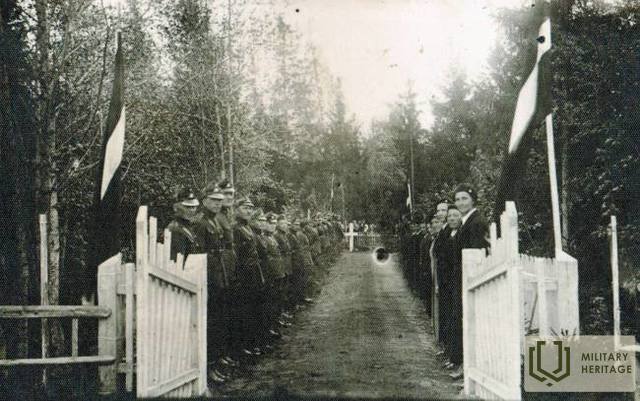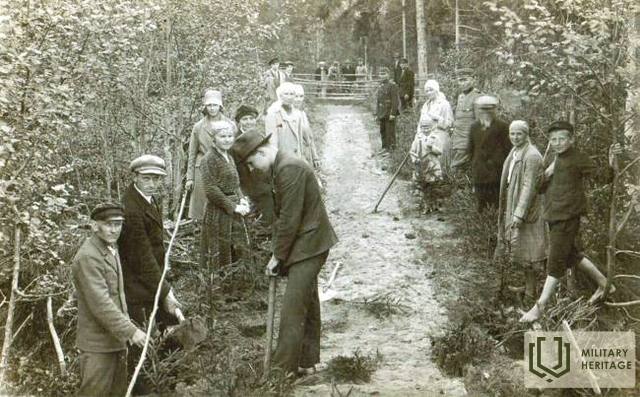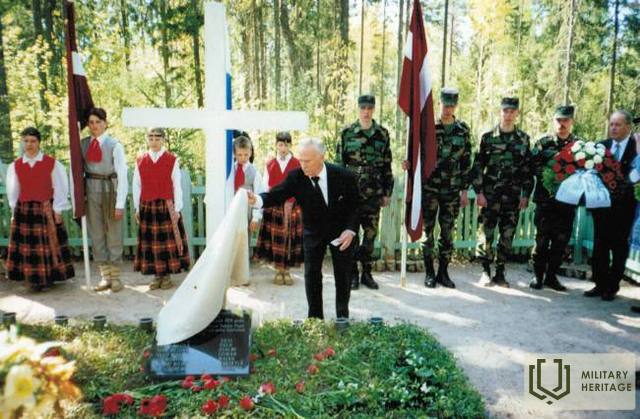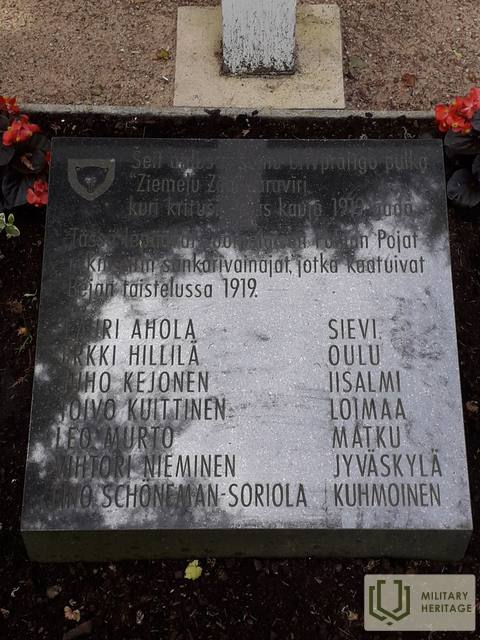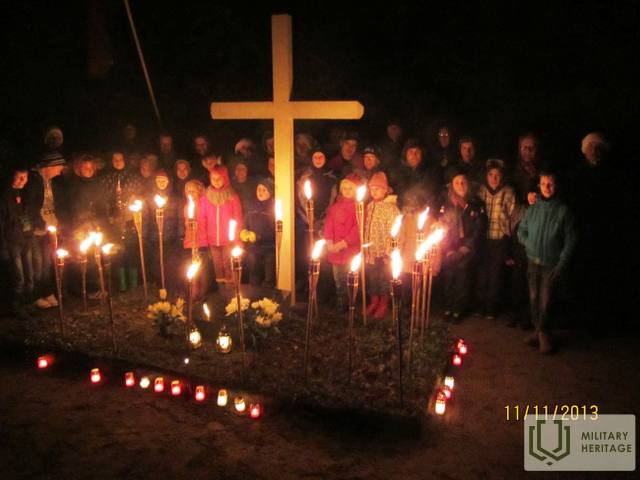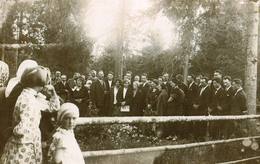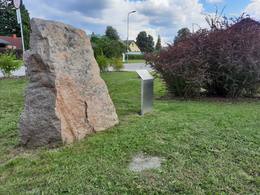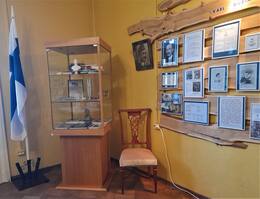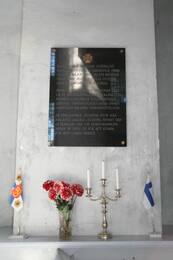Suomijos savanorių pulko „Šiaurės berniukai“ mūšis Bejoje
1919 metų vasario 23 dieną suomių savanorių pulko „Šiaurės berniukai“ žvalgybos dalinys, tikėdamasis gauti papildomų ginklų ir amunicijos, atvyko į Beja School upės daubą, kur įvyko susirėmimas su bolševikais (Babeckos mūšis). Šiame mūšyje krito 10 suomių pulko karių.
„Išsivadavimo karo metu mano motinos brolis Eino Soriola mokėsi Kurkijo žemės ūkio mokykloje. Vieną dieną raudoni atėjo į mokyklą ir paskelbė, kad jie ketina nužudyti kapitalistų šuniukus Motinos brolis buvo sužeistas į plaučius, o du dienas vengė paieškos, jis šlifavo į stabilios mėšlo krūvą ir sušildė pūlingą arklio mėšlą, kai jis paslėpė, jis atėjo į šeimą, kuri buvo „Corns“, o tai buvo „Corns“. Ypač sėkmingai, kai jis nuvyko į pirtį su raudonaisiais. Pilietinio karo metu dalyvavo Aunu kampanijoje ir Vieni kampanijoje, 1918 09 29 buvo sužeistas dideliame Vuokkiniemeno mūšyje, o pasveikęs nebeturėjo noro eiti į Estijos kautynes. Bet Hansas Kalmas išsiuntė laišką savo motinos broliui Eino, primindamas suomių savanorių atvykimą ir tikėjosi abipusių paslaugų išlaisvinant Estiją.
Motinos brolis nuėjo Šiaurės berniukų keliu, apie kurį rašė Hansas Kalmas. Mano dėdė tarnavo kulkosvaidžių būrio vadu, o per Valkos mūšį buvo paaukštintas seržantu. Marienburgo žygio metu dėl neteisingos informacijos 56 vyrų grupė nuvažiavo į slėptuvę, kur 1919 m. vasario 23 d. buvo sužeistas jų motinos brolis, kuris liko su kulkosvaidžiu, dangstydamas likusių sužeistųjų pabėgimą ant žirgo. Dėdės kūnas nerastas. Apie jį taip pat nebuvo jokių žinių.
Juho Kallinen, kuris taip pat dalyvavo Aunu pilietiniame kare, taip pat Estijos kampanijoje, papasakojo apie savo dėdės sužalojimą, nes jie mūšyje buvo toje pačioje grupėje. Senelis ir močiutė bandė kažką išsiaiškinti apie sūnaus likimą, tačiau visos pastangos buvo bergždžios. Paaiškėjo, kad jis žuvo Babeckos mūšyje ir buvo palaidotas kartu su kitais žuvusiais suomių kariais vietinio ūkininko Bērziņšo žemėje Latvijoje.
Vaizdo įrašas apie suomių karių broliškus kapus Bejoje ir Babeckos mūšį. https://www.youtube.com/watch?v=GbN5d9Y5ju8
Matti Matinolli pasakojimas apie jo brolį iš motinos pusės Eino Schōneman-Soriola, žuvusį 1919 m. vasario 23 d. Babeckos (Bėjos) mūšyje ir palaidotą Beja suomių karių brolijos kapinėse. Bay biblioteka.
https://timenote.info/lv/Finnish-Marshal-Grave-of-Bralu-Beja
https://lv.wikipedia.org/wiki/Battle_of_Bejas
https://www.sargs.lv/lv/starpkaru-periods/2015-01-10/somu-ziemelu-zenu-cinas-latvija#lastcomment
Susijusi laiko juosta
Susijusios temos
Susijusios vietos
Memorial stone to the Finnish Volunteer Regiment "Boys of the North"
Located in Alūksne, Jāņkalna Street 52, near Alūksne Narrow Gauge Railway Station.
On February 23, 2019, to mark the centenary of the Latvian War of Independence, a special memorial was created at the initiative of the Association of Independence Fighting Traditions (Finland) to honor the fallen Finnish volunteers, with a special boulder and information board. The memorial stone to Alūksne was removed from the Salpa line in Finland, which was built in 1940-1944. to protect the eastern border of Finland. The 1,200 km long Salpa line is one of the most important lines of defense in independent Finland, as well as one of the strongest and best-preserved defenses of its kind in Europe since World War II.
The stone brought to Aluksne symbolizes the struggle for independence of two nations - the Finns and the Latvians. A group of Finnish volunteers "Northern Boys" went to help Latvians protect the freedom of the new Latvian state. On February 21, 1919, the "Northern Boys" took part in fierce battles around Alūksne (Marienburg). After a five-hour battle at Alūksne railway station, the Finns occupied Alūksne. 23 Finnish volunteers were killed and many injured in the fight.
Collections of the Apriķi Museum and areas of activity of the Red Partisans
The Apriķi manor house houses the Apriķu Museum, whose exhibits tell about the ancient history of the region. The museum exhibits an exposition about the Finnish military figure Karl Gustav Mannerheim - 175 museum items, the interactive stand "KGMannerheim and Apriķi" (in three languages - Latvian, English and Finnish) with 6 sections - about the Apriķi manor, about KGMannerheim as a commander in the Winter War, as the freedom of Finland the leader of the battles and about his connection with the Aprikais.
The museum also displays World War II items with symbols of the German and Red Army, as well as a map - the areas of activity of the Red Partisans) and descriptions of the Red Partisans.
The Baroque ensemble of the Aprikku manor (Apprikken) building was formed by the Alokste River in the 18th century. at first. 20th century in the beginning, the owner of the manor is Carl Gustav Mannerheim, who later became the president of Finland, and is known as the author of the legendary Mannerheim line - the fortification system during the Winter War.
Memorial plaque to the Finnish Jaegers in the Holy Trinity Cathedral in Liepāja
A memorial plaque dedicated to the Finnish Jaegers is located in Liepāja Holy Trinity Cathedral, Lielā iela 9.
The Finnish Jägers were a unit of the German Empire, formed by volunteers from Finland, which, under the name of the 27th Royal Prussian Jäger Battalion, took part in the First World War battles on the Eastern Front of Latvia in 1916-1917.
During World War I, the Grand Duchy of Finland was part of the Russian Empire and many Finns wanted a German victory in the war in order to promote the establishment of an independent state. On 20 November 1914, the Finnish Independence Movement was founded in Helsinki, which also planned to form the armed forces of an independent state. When the German government confirmed its readiness to train the Finns in January 1915, the recruitment of volunteers began and by the spring of 1916 almost 2,000 soldiers were stationed in Germany and were named the 27th Royal Prussian Jäger Battalion.
From June 1916 the battalion was on the Riga front, when it was moved to Liepaja until March 1917. After the February Revolution, the Russian Empire began to collapse and on 6 December 1917 the Finnish Parliament declared independence.
On 13 February 1918, the Battalion swore allegiance to Finland in the Holy Trinity Church in Liepāja. On 15 February 1918, the battalion left the port of Liepaja by ship to return home to the port of Vasa and take part in the Finnish Civil War against the Reds, who had staged a coup d'état on 27 January 1918. The well-trained and combat-experienced Jägers formed the core of the Finnish national army and a large number became commanders during the Second World War.
The battalion's flag, consecrated in Holy Trinity Church, became the first flag of independent Finland.




